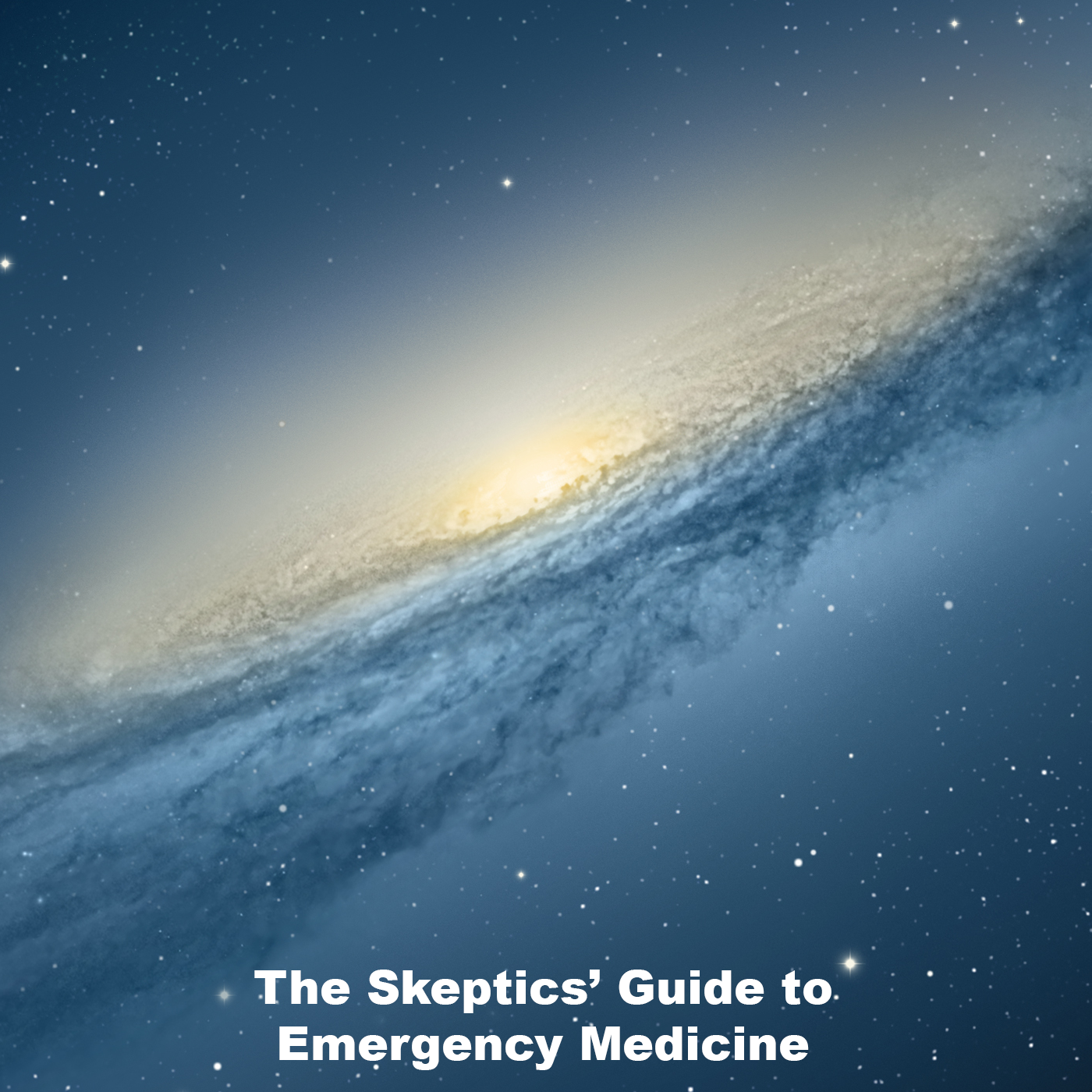

The Skeptics Guide to Emergency Medicine
Dr. Ken Milne
Meet ’em, greet ’em, treat ’em and street ’em
Episodes
Mentioned books

Mar 9, 2024 • 22min
SGEM Xtra: A Philosophy of Emergency Medicine
Dr. Matt De Stefano, a passionate advocate for medical education, invites listeners to explore the philosophical underpinnings of emergency medicine. The conversation emphasizes the importance of curiosity and skepticism, using lessons from 'Ted Lasso' to highlight empathy in healthcare. Dr. De Stefano discusses critical thinking as a crucial skill for residents, urging them to question established practices and embrace uncertainty for growth. The dialogue reflects on being teachable and adaptable, reinforcing that kindness and lifelong learning are vital in medicine.

Mar 2, 2024 • 34min
SGEM#432: SPEED, Give Me What I Need – To Diagnose Acute Aortic Dissections
Dr. Neil Dasgupta discusses using POCUS for rapid diagnosis of acute aortic dissections in a 59-year-old man with chest pain. The study named after 'Speed' emphasizes high sensitivity for diagnosing aortic dissections. Challenges in diagnosing dissections are explored, highlighting biases and limitations in implementing ultrasound techniques. The role of POCUS in diagnosis is emphasized, along with upcoming movie-themed parties for audience engagement.

Feb 24, 2024 • 49min
SGEM#341: You Make Me Feel Like a Natural Treatment
Ethan Milne, a Marketing PhD student at Ivey Business School, dives into the relationship between consumer behavior and mental health treatments. He discusses a case of a young man with major depressive disorder who worries about authenticity in using synthetic medication. The conversation explores preferences for natural over synthetic treatments, transparency in research, and the appeal to nature fallacy. Milne emphasizes informed decision-making in healthcare while shedding light on how social media influences consumer support for treatments.

Feb 11, 2024 • 36min
SGEM#430: De Do Do Do, De Dash, Dash DAShED – Diagnosing Acute Aortic Syndrome in the ED.
In this engaging discussion, Nirdosh Ashok Kumar, an Emergency Medicine Specialist from Aga Khan University Hospital in Karachi, dives into the complexities of diagnosing Acute Aortic Syndrome (AAS). He highlights the high misdiagnosis rates and the importance of timely intervention. The conversation sheds light on various biases in AAS research and the challenges of clinical decision-making amid limited resources. Kumar emphasizes the need for better communication with patients to enhance understanding of symptoms, ultimately aiming to improve outcomes in emergency settings.

Feb 3, 2024 • 18min
SGEM #429: It’s CT Angio, Hi. I’m the Problem. It’s Me. For Pediatric Oropharyngeal Trauma
Dr. Alexandra (Ali) Espinel, an Associate professor of pediatrics and otolaryngology, dives into the complexities of pediatric oropharyngeal trauma. She discusses a real case of a young boy injured by a toothbrush, highlighting the risks of oral injuries in active children. The conversation touches on the challenges of using CT angiography, revealing that its routine use may not be warranted. Additionally, they explore the contentious role of antibiotics in treatment and stress the importance of personalized care and family involvement in clinical decision-making.

Jan 27, 2024 • 28min
SGEM#428: Don’t Worry, Be Happy – The Safety of Nitroglycerin Administration in RVMI
Dr. Rupinder Sahsi, an emergency physician and EBM enthusiast with academic ties to McMaster and Wright State universities, joins to discuss the safety of nitroglycerin use in right ventricular myocardial infarctions (RVMI). The conversation delves into the historical doubts surrounding nitrates and highlights a recent meta-analysis that suggests reassessing prior clinical guidelines. Dr. Sahsi critiques existing studies and calls for a more evidence-based approach, balancing clinical insights with anecdotes that keep the discussion lively.

Jan 20, 2024 • 18min
SGEM #427: I Want a Treatment with a Short Course…for Pediatric Urinary Tract Infections
Dr. Ellie Hill, a pediatric emergency medicine physician at Children’s National Hospital, dives into the complexities of treating urinary tract infections (UTIs) in children. She explores the possibility of shorter antibiotic courses, addressing parental concerns and presenting research findings that suggest 5-day courses may be just as effective as longer ones. The discussion highlights the challenges in UTI diagnosis and the importance of shared decision-making with families, all while emphasizing the need for antibiotic stewardship to combat resistance.

Jan 13, 2024 • 26min
SGEM#426: All the Small Things – Small Bag Ventilation Masks in Out of Hospital Cardiac Arrest
Dr. Chris Root, an EMS fellow and flight physician with extensive experience, discusses the debate surrounding small bag ventilation masks during out-of-hospital cardiac arrests. He examines a study questioning traditional airway management priorities, emphasizing the importance of high-quality CPR and defibrillation. The conversation dives into research comparing ventilation mask effectiveness, with intriguing findings suggesting smaller bags might not yield the best outcomes. Root calls for a careful evaluation of these practices to enhance emergency medical service protocols.

Jan 6, 2024 • 42min
SGEM #425: Are You Ready for This? Pediatric Readiness of Emergency Departments
Dr. Rachel Hatcliffe, a pediatric emergency medicine attending at Children's National Hospital, and Dr. Kate Remick, an Assistant Professor at Dell Medical School, delve into the pediatric readiness of U.S. emergency departments. They discuss the impact of staffing challenges revealed during the COVID-19 pandemic and the critical need for pediatric emergency care coordinators. Highlighting a significant decline in pediatric inpatient units, they advocate for policy changes and enhanced resource allocation to improve care quality for children in emergencies.

Dec 30, 2023 • 40min
SGEM#424: Ooh-Ooh, I Can’t Wait – To Be Admitted to Hospital
Join Dr. Chris Carpenter, Vice Chair of Emergency Medicine at Mayo Clinic, as he delves into compelling topics surrounding emergency care. They discuss the critical implications of overnight stays for elderly patients, highlighting alarming mortality rates. The conversation sheds light on systemic issues like overcrowding and the urgent need for enhanced patient care strategies. They also explore the challenges of prioritizing geriatric needs while ensuring equitable care across all demographics in emergency settings.


